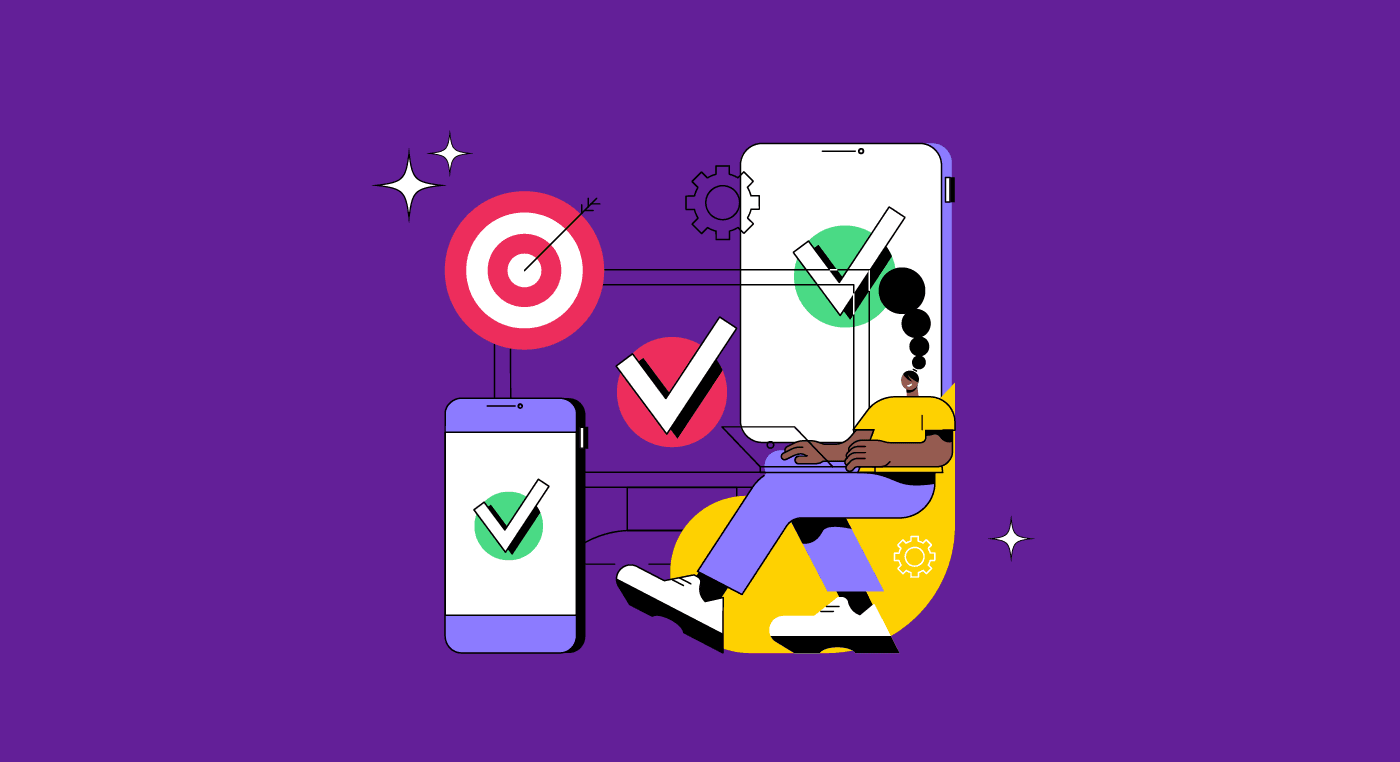Card Sorting is a great method to generate valuable insights into the research process and Information Architecture.
When developing a digital product, designers need to organize information in a certain way, so people can find what they are looking for and not get lost or confused while interacting with an interface.
That’s why a big part of providing a good user experience relates to how you organize, classify, and categorize your content.
However, content is often structured to make sense to the company and UX team, but not necessarily to their users.
And one of the best ways to find out how to organize information to correspond to the mental models of your target audience is through Card Sorting.
This article will help you understand how and when to use Card Sorting, with a few extra tools to help you with the process.
Reading tip: Visual Hierarchy: How To Prioritize and Highlight Information
What is Card Sorting?
Card Sorting is a UX research method to find out how users understand and classify your content. This approach is widely used in Information Architecture because, with this understanding, the UX team can organize and label information in a way that makes sense to their visitors.
Through cognitive psychology, Card Sorting can show users’ mental models and reveal the logic behind the way they think.
You can use Card Sorting sessions to solve issues like:
- Classify products on e-commerce;
- Organize questions on FAQ pages;
- Untangle a complex website;
- Organize content on blogs or websites — see how our content is organized on aela.io.
Ensuring an excellent Information Architecture will make your website more accessible and user-friendly, thus, delivering the best experience possible to your target users.
How does it work?

During a Card Sorting session, participants receive a pile of cards to then organize them into categories. These categories can either be pre-defined or not.
It is important to pay attention to users’ reactions while they organize the cards or think out loud. Observe their reactions, body language, and line of thought.
This will give observers a better understanding of why users make their decisions. You can use paper, post-its, or an online tool to put the method to practice – we’ll show you a few at the end of this article.
Reading tip: Alignment in UI: The Invisible Structure Behind Designs
Card Sorting types: choose according to your needs
Basically, the variations of Card Sorting involve three aspects: whether users name the categories themselves, whether there’s a moderator, and whether it’s done remotely or not.
- Open Card Sorting: users create categories.
- Closed Card Sorting: categories are already defined.
- Hybrid: categories are already named, but participants have the liberty to create new ones.
- Remote: the sessions are held through software.
Open Card Sorting

When we talk about Card Sorting, this is the classic method. During an open Card Sorting session, each participant receives a pile of cards to then group them as they see fit.
Next, users should name each pile of cards they have grouped together. This method can be used for creating new or existing Information Architecture, and also for organizing products on a website.
For example, bananas and apples belong to the same pile of cards, and we will label this group as Fruits.
Closed Card Sorting

In a closed Card Sorting session, participants are asked to place each card into a predetermined set of groups (already named by the moderators).
This method is generally used when designers need to add new content to an existing website or generate additional insights after a round of Open Card Sorting.
Disadvantage: it won’t reveal how users label a category, i.e., a set of cards/topics. So closed card sort is best suited to evaluate if the categories pre-defined by the team are aligned with the content, according to users’ perspectives.
Hybrid Card Sorting
As the name suggests, a hybrid card sort uses both open and closed methods.
Participants are asked to organize cards into pre-defined categories but are also free to create and name their own groups.
The hybrid type can be valuable when:
- you want to improve your existing classification structure;
- to generate ideas on how to group topics;
- when you know there are missing categories in your current classification structure.
Thus, the UX team and researchers can gain insights into missing categories, and these findings can help clarify design decisions.
Remote
It is not always possible to hold a Card Sorting session in person, especially during and after the pandemic, when remote work has become more and more necessary.
In a remote session, users will sort topic cards independently through software, where they have to drag and drop each card into categories.
On the plus side, online tools also provide multiple ways to analyze data.
Disadvantage: as there is no direct contact with the user, there is no way to understand what led the user to organize the cards in a certain way.
Reading tip: Usability: How To Develop A User-Friendly Website
Step by step

First, you should choose the topics that will be tested; keep in mind that they should be at the same hierarchical level (learn more about Visual Hierarchy).
For the cards, you can use paper or an online tool like Optimal Workshop or Userzoom.
1) Create a spreadsheet and cards
Create a spreadsheet listing and enumerating all the items to be tested. These topics can be web pages, product categories, or labels in a taxonomy.
Write each item on a single card, with the corresponding number on the back. This numbering will help if you want to run further analysis after the sessions are complete.
Tip: avoid topics that contain the same words; participants will tend to group these cards together.
2) Participants organize the cards
Shuffle and give the cards to participants. Ask users to look at each card and place the cards that “belong together” in the same pile.
If the participant isn’t sure about a card or doesn’t know what it means, it’s okay to set it aside. It is better to have a set of “unknown” or “undecided” cards than randomly group cards together.
Important: there is no correct number of piles. Some people create several small stacks, while others have fewer categories. It all depends on one’s mental model.
Explain to participants that it’s okay to change their minds as they work: they can move a card from one pile to another, merge two stacks, split a pile into two, etc.
3) Participants classify the cards
When participants have finished grouping all the cards, hand out new blank cards to write a name for each group created (naming each pile of cards).
You can get some ideas for navigation categories, but don’t expect participants to create effective labels.
4) Interview participants
This step is optional but highly recommended: ask users to explain the logic behind the groups they created. Ask questions like:
- Were any items especially easy or difficult to organize?
- Did any items appear to belong to two or more groups?
- What do you think about the topics without groups (if any)?
You can also ask the user to Think Aloud while ranking; this provides more insights but takes more time to analyze information.
For example, you might hear the participant say, “I will put the Tomatoes card under Vegetables. Oh, but it’s a fruit. I think Fruit is a better combination.”
This kind of statement would allow you to conclude that the user considered Vegetables a good match for Tomatoes, although Fruits were even better. This information can lead you to crosslink from Vegetables to Fruits or even assign the item to Vegetables if this pattern is present with other users.
5) If necessary, ask users to organize differently
It would be best not to impose your own desires or biases on the participant during the first few steps.
But after the users have grouped the cards and you ran the qualitative interview, you can then ask the participant to separate large groups into smaller subgroups. Or the opposite: grouping small groups into larger categories.
6) Repeat with 15 users
You will need a minimum number of users to detect patterns in users’ mental models.
NN/g recommends 15 participants for card ranking: with more, you can get less valuable returns for each additional user; with less, you won’t have enough data to reveal patterns in the organization schemes.
7) Analyze
Once you have all the data, look for patterns: common groups, similar category names, and frequently paired topics.
If you notice that some items are often left out, see if it’s because the labels on the cards weren’t clear or if the content seemed unrelated to the rest of the topics.
Finally, combine the patterns identified with the insights generated from the quality interview. As a result, you will better understand which organizational system will be most successful for your target audience.
Usefool tools
Here are some of the best software to run Card Sorting sessions:
Optimal Workshop: for closed and open sessions. It has the option to recruit participants online, as well as a variety of additional survey questions;
UserZoom: also allows closed and open Card Sorting and participant recruitment. You can customize the appearance.
UsabilityTools: you can create Card Sorting along with survey questions, screenshot tests, or scenario-based tests. Great for visualizing data, recruitment dashboard included.








